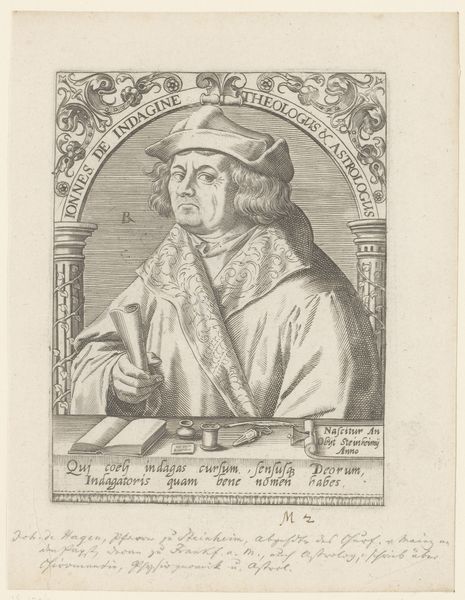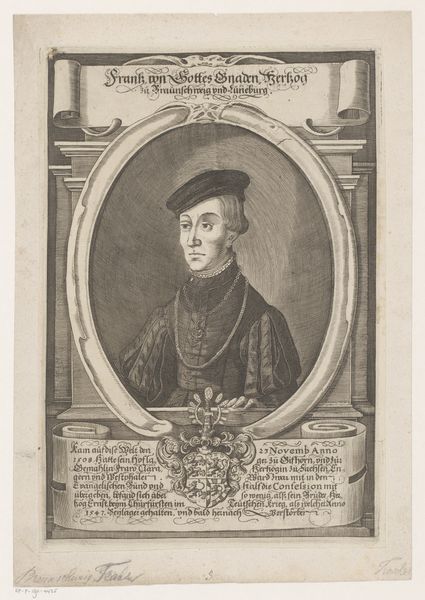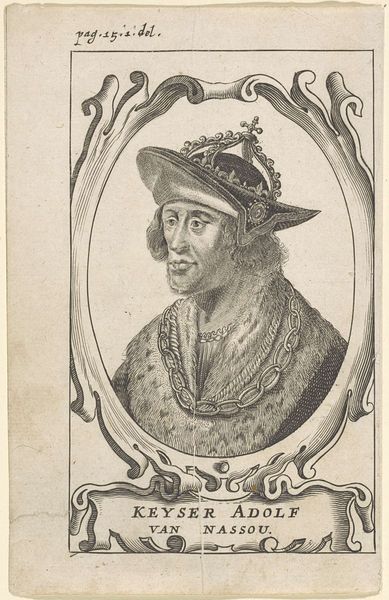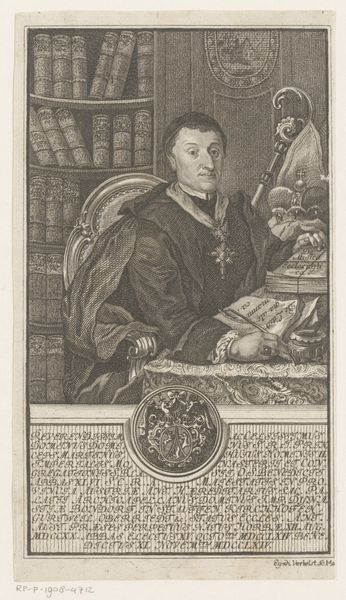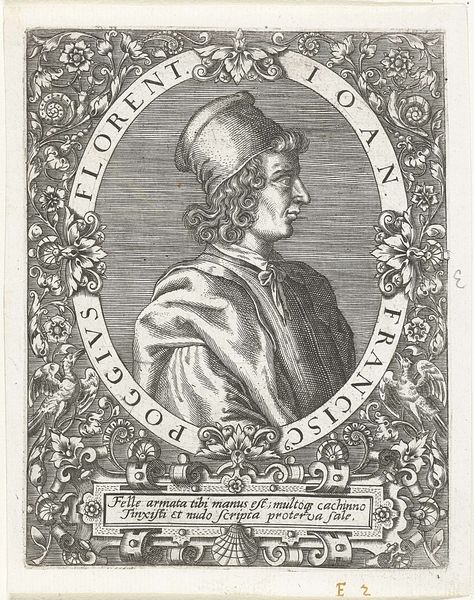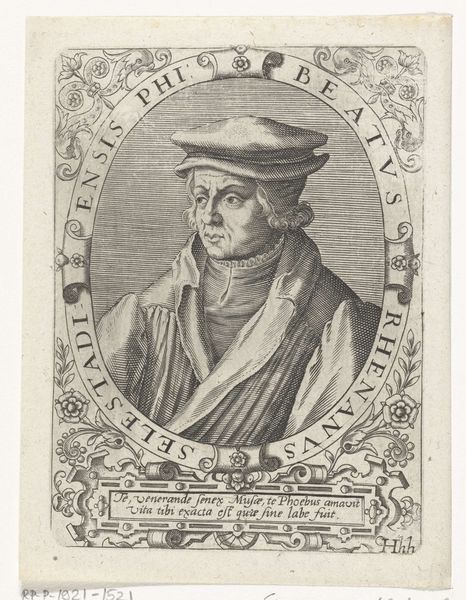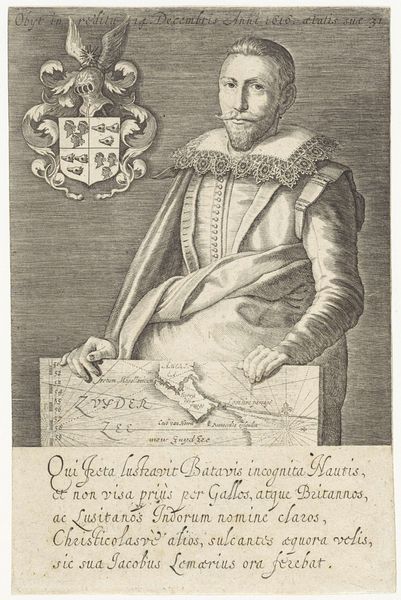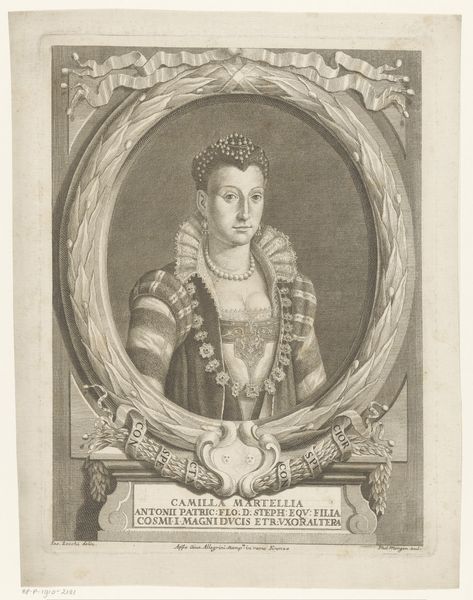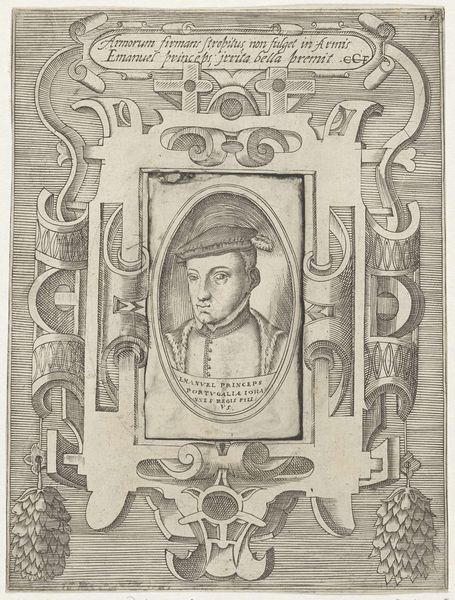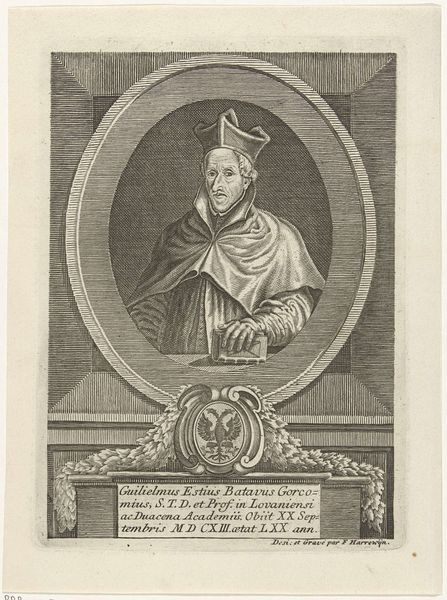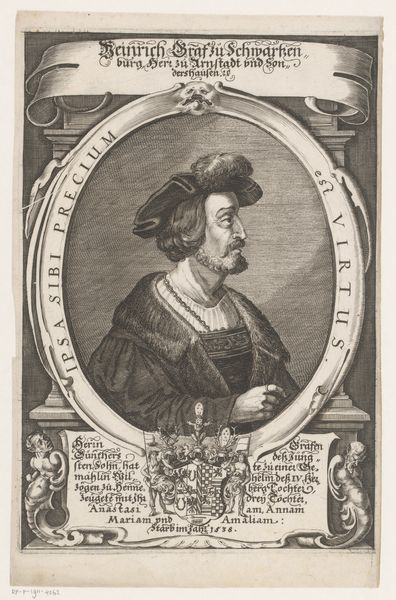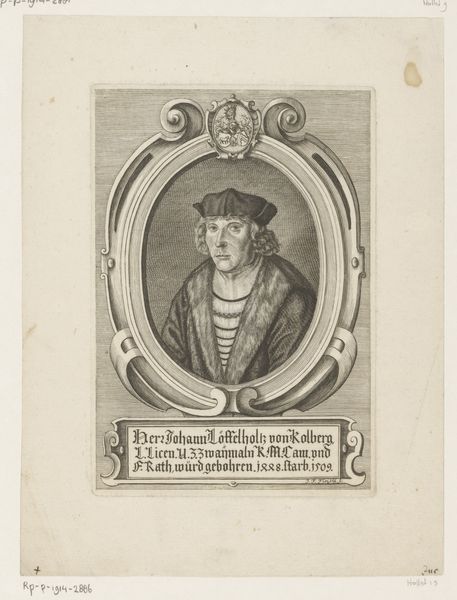
print, engraving
#
portrait
#
baroque
#
pen drawing
# print
#
figuration
#
line
#
history-painting
#
engraving
Dimensions: height 232 mm, width 176 mm
Copyright: Rijks Museum: Open Domain
Editor: So, this is "Portret van de rechtsgeleerde Willem van Diemen," created sometime between 1583 and 1627 by Adam van Vianen I. It's an engraving. What strikes me is the detail in the frame, and how Willem van Diemen is placed in what feels like a position of authority, encased in symbolic and textual markers. How do you interpret the visual and textual construction here? Curator: Well, this engraving gives us a window into the social and political landscape of the Dutch Golden Age. Willem van Diemen, as a legal scholar, occupied a crucial position in society. Notice how he's framed, literally, by text proclaiming his virtues and achievements. Look closely at the allegorical figures of Justice and Prudence in the upper corners, virtues a man like Willem Van Diemen was thought to be representing. Editor: So, it’s not just a portrait, but a constructed image meant to project a certain idea? Curator: Exactly. These images weren’t just about capturing a likeness; they were actively shaping perceptions. The artist uses a very specific visual language here. Note how the ornate frame, packed with symbolism and text, asserts van Diemen's place within the socio-political hierarchy. The fur and formal dress contribute to the message, as well. It all constructs an argument about power and legitimacy. Who benefits from this construction? And how might such an image function to silence or erase other voices and perspectives within that same historical context? Editor: I see what you mean. It makes me think about the power of portraiture in creating and reinforcing social norms. Curator: Precisely. It encourages us to ask critical questions about how power operates through images and whose stories get told and validated in art history. Editor: This portrait, seen in this light, has provided a richer picture of the individual and of the period he was in! Curator: Indeed. Seeing art as more than just aesthetics opens the door to so many stories about who we are and how our societies function.
Comments
No comments
Be the first to comment and join the conversation on the ultimate creative platform.
